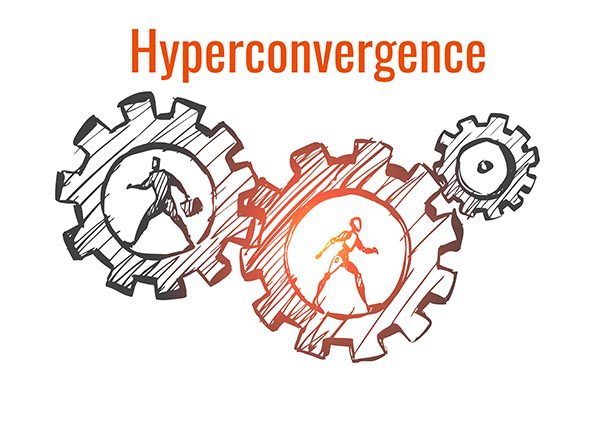
Hyperconvergence (HCI) is a software infrastructure that integrates multiple compute, network, and storage resources into one system.
Think of it as a closet full of customized, matching outfits. Matching pants, shirts, and jackets hang on one hanger and jeans, t-shirts, and sweaters hang from another. A person can easily pull both from the same place: the first outfit for work and the second to visit a friend. The closet holds the clothes and the system or hardware holds the compute, network, and storage combinations. Each outfit or configuration can be easily accessed by a person to fit a situation.
A typical HCI consists of:
- Commodity Servers: Inexpensive hardware that is widely available and more or less interchangeable with other devices.
- Combination of Disks: SSD and HDD: an array of hard drives and/or other disk drives.
- Networking Switches: Devices used to connect to a network.
- Hypervisor: VMware, Hyper-V, OpenStack, KVM, etc.: software algorithms that separate a computer operating system and applications.
- VSA: Virtual Storage Appliance: a controller to augment storage.
The HCI is flexible, simple, configurable, and restorable with a simple snapshot.
Other Definitions of Hyperconvergence Include:
- “A single system that integrates compute, network, and storage along with virtualization resources.” (George Williams)
- “Software and/or hardware to create an IT infrastructure that virtualizes all of the needed efficient and highly functional computer processing systems.” (Keith Foote)
- “A category of scale-out software-integrated infrastructure that applies a modular approach to compute, network, and storage on standard hardware, leveraging distributed, horizontal building blocks under unified management.” (Gartner)
- “An IT framework combines compute, storage, and networking into a single system.” (NetworkWorld)
- “A turnkey product that includes all the hardware and software one needs to run a contained little data center in a box.” (TechRepublic)
- A combination of “compute nodes, storage, and networking into a bundled solution that create highly available and scalable clusters.” (Stanford)
Businesses Use Hyperconvergence to:
- Having a scalable approach and snapshot data replication for improved business continuity
- Fortifying an operating system to protect against potential ransomware attacks
- Upgrading a data center and disaster recovery hardware so it is current and can easily be modernized
- Setting up flexible, on-demand storage
- Reducing complexity
- Minimizing fragmentation
- Lowering costs
- Improving data protection
- Improving performance
Image used under license from Shutterstock.com